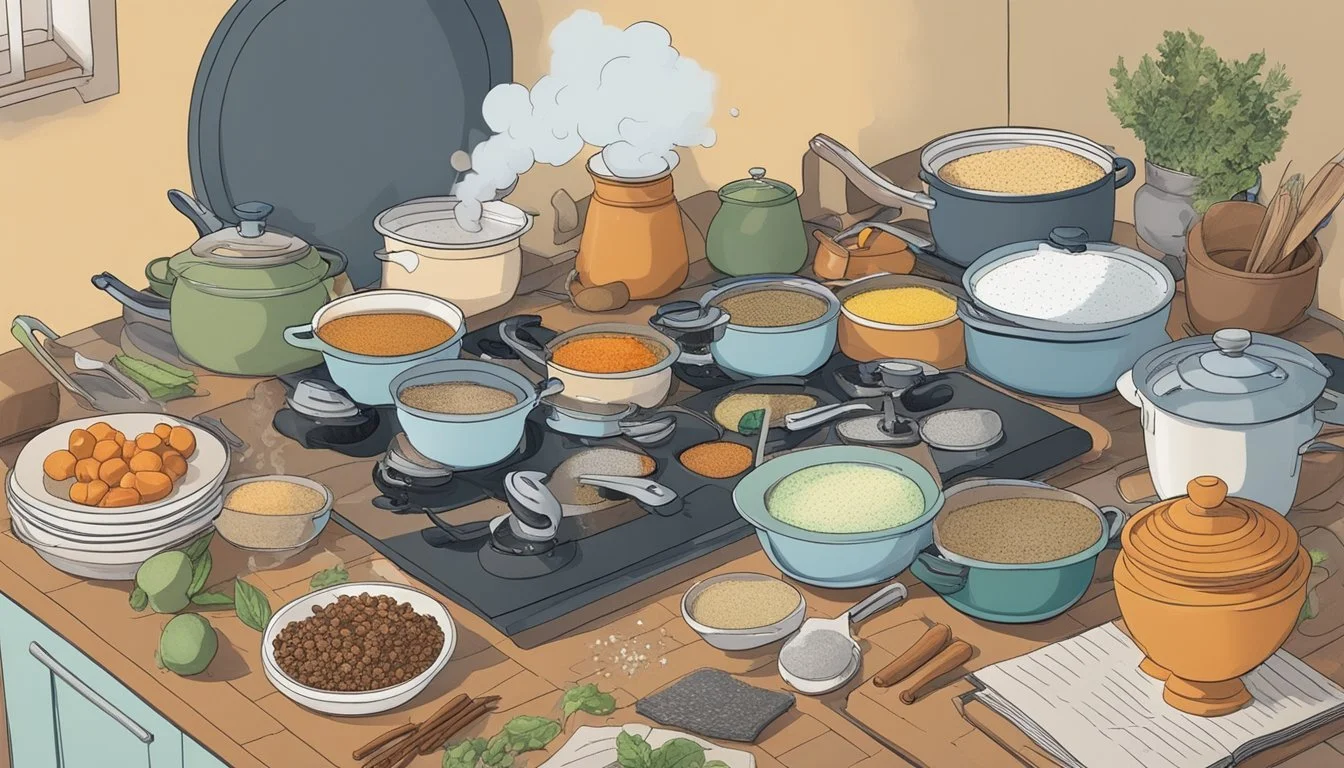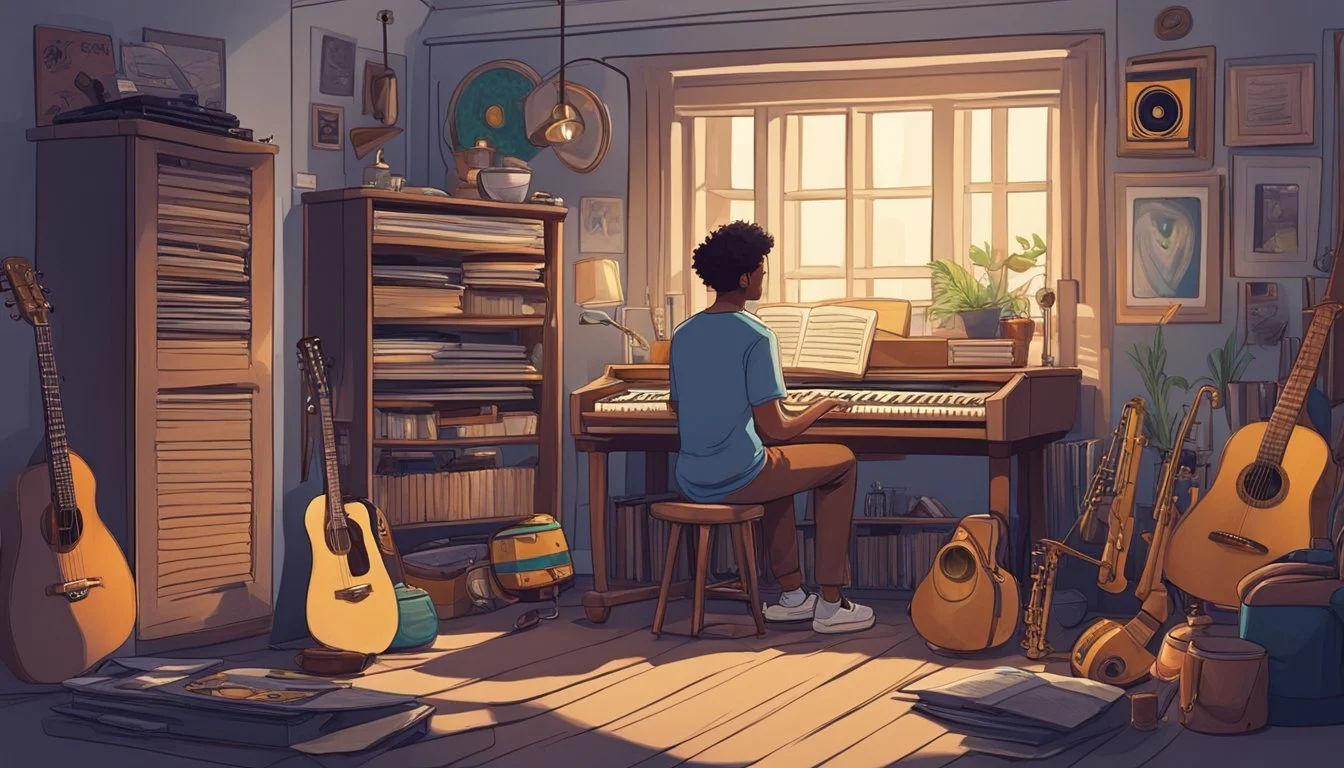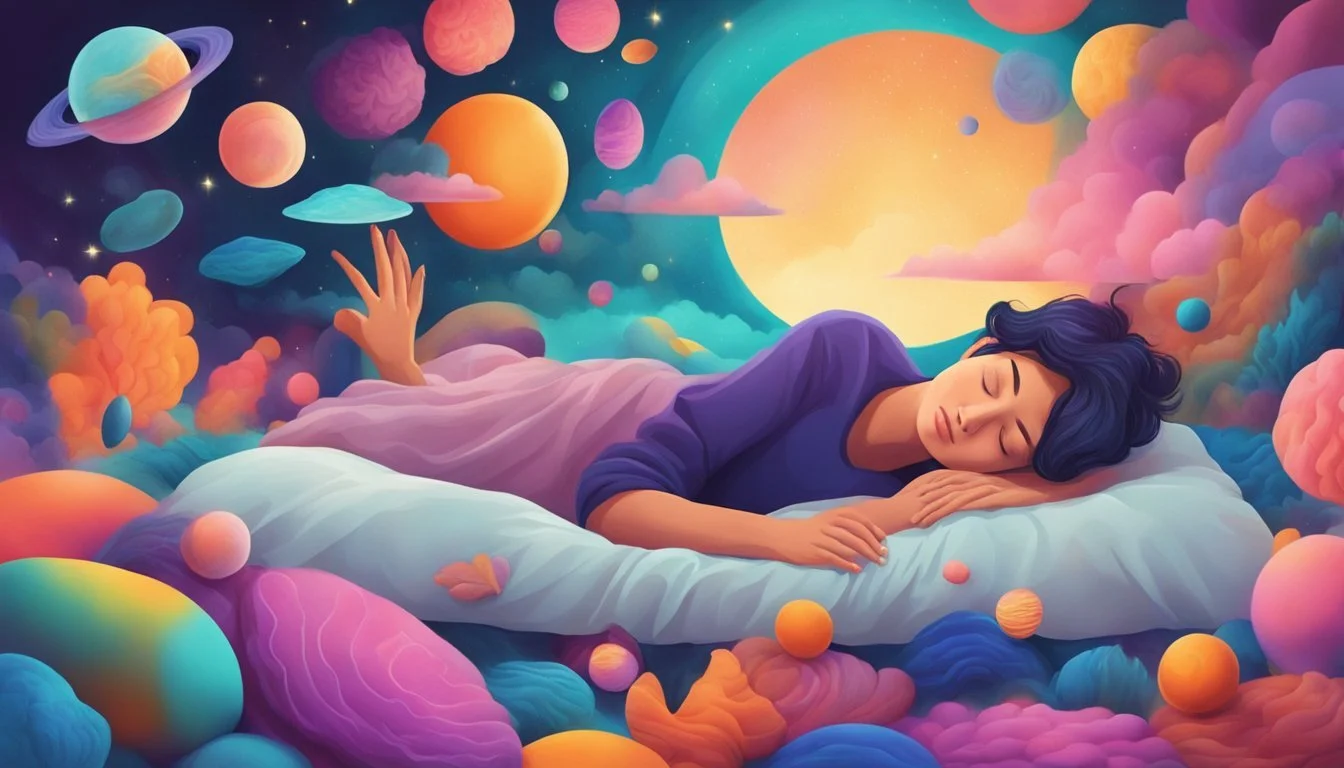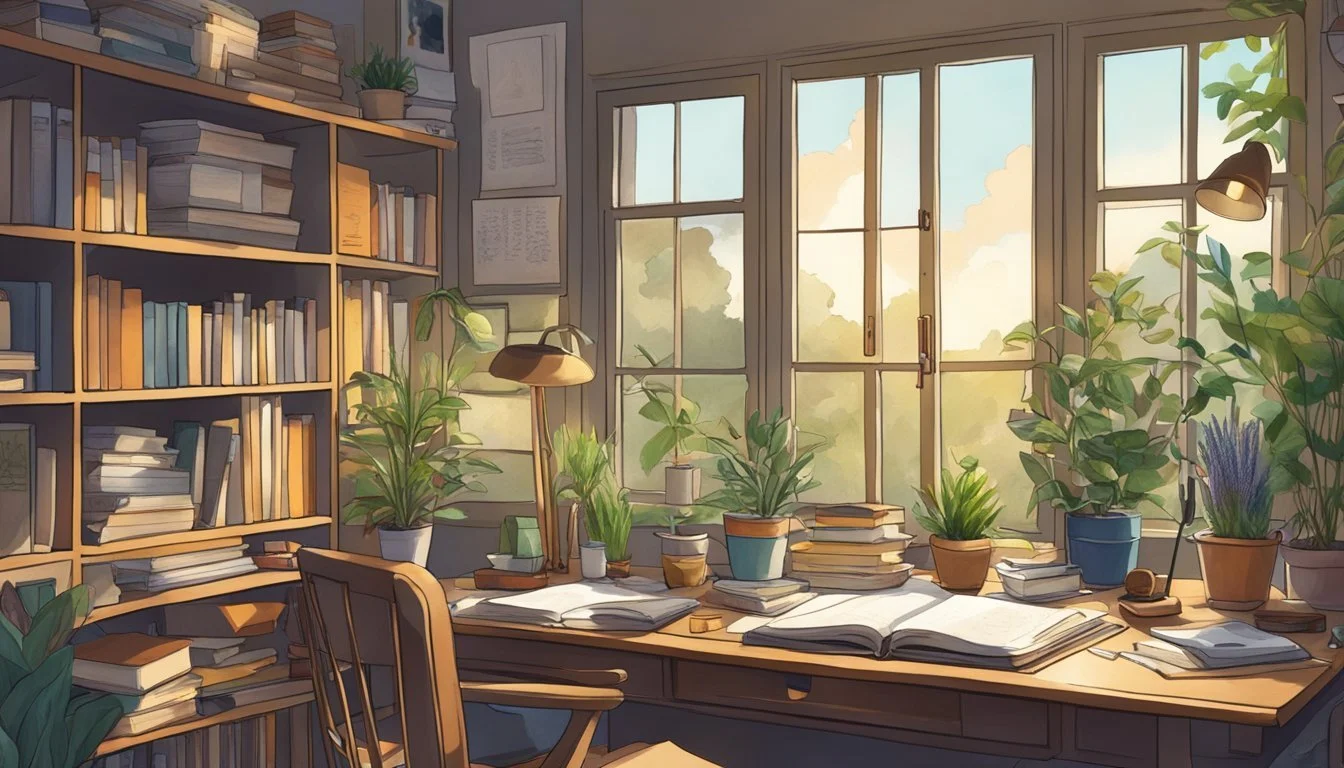12 Unusual Habits of Highly Creative People
Unconventional Practices That Spark Innovation
Creativity is often seen as an innate talent, but it can be cultivated through specific habits and practices. Many highly creative individuals share certain behaviors that set them apart from others. These habits may seem unusual or unconventional, but they play a crucial role in fostering innovative thinking and artistic expression.
By understanding and adopting these unique habits, anyone can enhance their creative potential and unlock new realms of imagination. This article explores twelve uncommon practices observed in highly creative people, offering insights into how they approach their work and life. From embracing uncertainty to seeking out new experiences, these habits provide a glimpse into the mindset that drives creative success.
1) Journaling before bed
Creative individuals often engage in the practice of journaling before sleep. This habit allows them to reflect on their day and process their thoughts and emotions.
Many find that writing before bed helps reduce stress and promote relaxation. By expressing their ideas on paper, they can clear their minds of worries and anxieties accumulated throughout the day.
Journaling at night can also serve as a valuable tool for capturing creative insights. The quiet, undisturbed moments before sleep provide an ideal environment for the mind to wander and explore new concepts.
Some creative people use this time to brainstorm ideas or solve problems they've been grappling with. Others focus on gratitude, noting positive experiences from their day to cultivate a more optimistic mindset.
This nightly ritual can improve sleep quality by helping individuals wind down and transition from the busyness of the day to a more restful state. It creates a bridge between waking life and the subconscious world of dreams.
2) Drawing with non-dominant hand
Highly creative individuals often engage in unconventional practices to stimulate their imagination. One such habit is drawing with their non-dominant hand.
This technique challenges artists to step out of their comfort zone and approach their craft from a new perspective. By using their less-skilled hand, they create unique marks and lines that differ from their usual style.
The process encourages spontaneity and reduces reliance on muscle memory. This can lead to unexpected and innovative results in their artwork.
Drawing with the non-dominant hand also activates different areas of the brain. It forces artists to focus more intently on the drawing process, potentially enhancing their observational skills.
Some creative professionals use this method as a warm-up exercise before starting their main work. It helps them loosen up and break free from rigid thinking patterns.
This practice can extend beyond visual arts. Writers may experiment with handwriting using their non-dominant hand to spark new ideas or overcome writer's block.
Embracing this unusual habit demonstrates the willingness of highly creative individuals to explore unconventional methods. It reflects their openness to new experiences and their dedication to nurturing their creativity.
3) Cooking without recipes
Highly creative individuals often embrace the art of cooking without relying on recipes. This approach allows them to experiment freely with flavors, textures, and ingredients, fostering culinary innovation.
Creative cooks develop a deep understanding of ingredient combinations and cooking techniques. They learn to trust their instincts and make decisions based on taste, smell, and visual cues rather than following strict instructions.
By cooking without recipes, creative people hone their problem-solving skills. They adapt to available ingredients and improvise solutions when faced with unexpected challenges in the kitchen.
This habit encourages mindfulness and presence in the cooking process. Without the distraction of constantly referring to a recipe, creative cooks can fully immerse themselves in the sensory experience of preparing food.
Cooking without recipes also promotes resourcefulness. Creative individuals learn to make the most of what they have on hand, combining ingredients in unique ways to create delicious meals.
This approach to cooking often leads to the development of signature dishes and personal cooking styles. Creative cooks can express their individuality through their culinary creations, much like artists do through their chosen medium.
4) Taking long, aimless walks
Highly creative individuals often engage in the practice of taking long, aimless walks. This habit allows their minds to wander freely, unencumbered by specific goals or destinations.
During these walks, creative people may find inspiration in their surroundings, whether in nature or urban environments. The act of walking itself can stimulate blood flow to the brain, potentially enhancing cognitive function and creative thinking.
Many renowned writers, artists, and thinkers have incorporated regular walks into their routines. For example, Charles Dickens was known to take lengthy nighttime strolls through London, while philosopher Friedrich Nietzsche claimed that his best ideas came to him while walking.
These walks provide an opportunity for creative individuals to disconnect from their usual work environment and daily pressures. This mental break can lead to unexpected connections and fresh perspectives on problems or projects.
Some creative people use their walks as a form of active meditation, allowing thoughts to flow naturally without judgment. This unstructured thinking time often results in new ideas or solutions to creative challenges.
5) Listening to unfamiliar music genres
Creative individuals often expand their musical horizons by exploring unfamiliar genres. This habit exposes them to new sounds, rhythms, and structures, stimulating their minds in novel ways.
Listening to diverse music styles can spark fresh ideas and inspire innovative thinking. It challenges the brain to process different auditory patterns, potentially enhancing cognitive flexibility.
Creative people may deliberately seek out genres outside their comfort zone. This could include anything from classical to electronic, world music to experimental jazz.
The act of engaging with unfamiliar music can also foster open-mindedness and cultural appreciation. It broadens perspectives and may influence creative output in unexpected ways.
Research suggests that varied musical experiences can positively impact divergent thinking, a key component of creativity. This practice may help creative individuals break out of established thought patterns.
By embracing musical diversity, creative people keep their minds agile and receptive to new influences. This habit reflects their willingness to explore and learn from different forms of artistic expression.
6) Practicing lucid dreaming
Highly creative individuals often engage in lucid dreaming as a means to tap into their subconscious minds and unlock new ideas. Lucid dreaming occurs when a person becomes aware they are dreaming and can exert some control over the dream's content.
Creative people may use techniques like reality checks throughout the day to increase their chances of achieving lucidity during sleep. They might also set alarms to wake themselves during periods of REM sleep, when lucid dreams are more likely to occur.
Once in a lucid dream state, these individuals can explore fantastical scenarios, solve problems, or practice skills in ways not possible during waking hours. This unique form of mental exploration can lead to fresh insights and innovative concepts.
Some creative professionals report using lucid dreams as a source of inspiration for their work. Artists might visualize new pieces, musicians may compose melodies, and writers could craft story ideas within the limitless realm of their dreams.
Regular practice of lucid dreaming can enhance overall dream recall and potentially boost creativity in waking life. Creative individuals who master this skill often find it a valuable tool in their artistic arsenal.
7) Keeping a dream journal
Highly creative individuals often maintain dream journals to capture the ephemeral imagery and narratives from their subconscious minds. This practice allows them to preserve fleeting ideas that might otherwise be lost upon waking.
Dream journaling involves recording dreams immediately upon waking, before the details fade from memory. Creative people use these journals as a source of inspiration for their artistic endeavors, writing, or problem-solving.
The act of regularly documenting dreams can enhance dream recall over time. This increased awareness of one's dream life may lead to more vivid and memorable dreams, further fueling creativity.
Many creative thinkers report finding unexpected connections or solutions to problems within their recorded dreams. By revisiting their dream journals, they can uncover patterns or symbols that provide unique insights into their creative processes.
Some artists and writers directly incorporate elements from their dream journals into their work. This practice allows them to tap into the surreal and unconventional imagery often present in dreams, adding depth and originality to their creations.
8) Using random word generators
Highly creative individuals often employ unexpected tools to spark their imagination. Random word generators have become a popular choice for stimulating unique ideas and breaking through creative blocks.
These digital tools produce arbitrary words or phrases, which creative thinkers then incorporate into their work. The randomness pushes them to make unconventional connections and explore new directions they might not have considered otherwise.
Writers may use random words as writing prompts or to overcome writer's block. Artists might integrate unexpected words into their visual compositions, leading to fresh concepts and styles.
Innovators in various fields utilize random word generators to approach problems from different angles. By associating unrelated terms with their projects, they often stumble upon innovative solutions.
This technique encourages lateral thinking and helps creatives step outside their usual thought patterns. It challenges assumptions and opens up new possibilities, fostering a more flexible and expansive creative process.
9) Sketching while blindfolded
Highly creative individuals often engage in unconventional practices to spark their imagination and hone their skills. One such habit is sketching while blindfolded. This unusual technique challenges artists to rely on their other senses and tap into their intuition.
By removing visual input, creators focus on the physical sensations of drawing and the mental imagery they conjure. This process can lead to unexpected and innovative results, freeing the artist from preconceived notions of what their work should look like.
Blindfolded sketching also enhances spatial awareness and hand-eye coordination. Artists may discover new ways of perceiving and representing objects or ideas, leading to fresh perspectives in their work.
This practice can serve as a form of meditation, allowing artists to connect more deeply with their creative process. It encourages a state of flow and reduces self-criticism, as the focus shifts from the end result to the act of creation itself.
Many creative professionals incorporate blindfolded sketching into their routines as a warm-up exercise or a method to overcome creative blocks. This unique approach demonstrates the willingness of highly creative individuals to step outside their comfort zones and embrace unconventional methods to fuel their artistic growth.
10) Writing poetry spontaneously
Highly creative individuals often engage in spontaneous poetry writing. This practice involves composing verse on the spot, without prior planning or preparation.
Many poets find that sudden bursts of inspiration lead to their most authentic and original work. They may carry notebooks or use smartphone apps to quickly jot down lines as they come.
Some creative minds deliberately put themselves in new environments to spark impromptu poetry. This could mean visiting unfamiliar locations or trying new experiences.
Others practice freewriting techniques, setting timers and writing non-stop for short periods. This helps bypass self-censorship and access deeper creative wells.
Spontaneous poetry can serve as a form of emotional release or self-expression. It allows poets to capture fleeting thoughts and feelings in the moment.
While not all spontaneous poems become polished works, the practice helps cultivate a mindset of constant creative readiness. It trains the mind to see poetic potential in everyday observations.
11) Brainstorming during showers
Many creative individuals find that their best ideas come to them while showering. The relaxed state and warm water create an ideal environment for the mind to wander freely.
Showers provide a unique combination of solitude, comfort, and sensory stimulation that can spark creative thinking. The white noise of running water helps drown out distractions and allows thoughts to flow more easily.
The absence of technology and other interruptions in the shower gives the brain space to make new connections. This distraction-free time often leads to unexpected insights and solutions to problems.
Some creative people deliberately use shower time as a brainstorming session. They might mentally review projects or challenges before stepping in, allowing their subconscious to work on ideas while they bathe.
To capture shower-inspired ideas, waterproof notepads or voice-activated devices can be useful tools. These allow individuals to record their thoughts before they slip away, preserving potentially valuable creative insights.
12) Talking to themselves
Creative individuals often engage in self-talk, a habit that may seem peculiar to others but serves important cognitive functions. This practice allows them to externalize their thought processes, making complex ideas more tangible and easier to manipulate.
By vocalizing their thoughts, creative people can better organize and structure their ideas. This verbal processing helps them explore different perspectives and potential solutions to problems they're working on.
Self-talk also acts as a form of self-motivation and encouragement. Creative individuals may use positive affirmations to boost their confidence or provide themselves with constructive feedback during challenging tasks.
Research suggests that talking to oneself can improve focus and concentration. It helps creative people maintain their attention on specific tasks, especially when dealing with multiple ideas or complex projects.
This habit can also enhance memory retention. By speaking thoughts aloud, creative individuals may find it easier to remember important details or insights that arise during their creative process.
While it may appear unusual to observers, self-talk is a valuable tool for many creative people. It aids in problem-solving, idea generation, and maintaining focus throughout their creative endeavors.
Understanding the Creative Mind
Creativity stems from complex cognitive processes and neurological structures. Research reveals distinct brain patterns and thought processes in highly creative individuals.
The Science Behind Creativity
Divergent thinking forms the foundation of creativity. This cognitive ability allows people to generate multiple solutions to open-ended problems. Creative individuals excel at making unique associations between seemingly unrelated concepts.
Researchers have identified several key components of creativity:
Fluency: Generating many ideas quickly
Flexibility: Shifting between different categories of thought
Originality: Producing unusual or novel ideas
Elaboration: Adding details to expand on ideas
Studies show creative people score higher on tests measuring these abilities. They also demonstrate enhanced working memory and cognitive flexibility.
Neurological Perspectives
Brain imaging studies reveal differences in creative individuals' neural activity. Creative tasks activate multiple brain regions simultaneously, including:
Prefrontal cortex: Executive functions and idea generation
Default mode network: Imagination and self-reflection
Salience network: Attention and task switching
Creative people show stronger connections between these networks. This allows for more efficient information flow and novel idea combinations.
Neurotransmitters also play a role. Dopamine levels correlate with creative performance, while reduced latent inhibition lets more information reach conscious awareness.
Environmental Influences on Creativity
Creative individuals thrive in environments that nurture their unique thought processes and behaviors. The physical workspace and broader cultural context play crucial roles in shaping and supporting creative expression.
Workspace Design
Creative people often customize their workspaces to boost productivity and inspiration. Many prefer open, flexible areas that allow for easy movement and rearrangement of furniture. Natural light and views of nature can stimulate creativity and reduce stress.
Some creatives incorporate unique elements like standing desks, meditation corners, or art displays. These personalized touches help maintain focus and spark new ideas.
Organization is key for many creative minds. They may use color-coded systems, idea boards, or digital tools to manage projects and capture fleeting thoughts.
Cultural and Social Factors
The cultural environment significantly impacts creative expression. Societies that value innovation and risk-taking tend to foster more creative individuals.
Creative people often seek out diverse social circles and experiences. Exposure to different perspectives challenges assumptions and fuels new ideas.
Collaboration plays a vital role in creativity. Many creative individuals participate in group brainstorming sessions or join artistic communities to exchange ideas and receive feedback.
Some creative people thrive in competitive environments, using challenges as motivation. Others prefer supportive, non-judgmental spaces where they can freely experiment without fear of failure.









